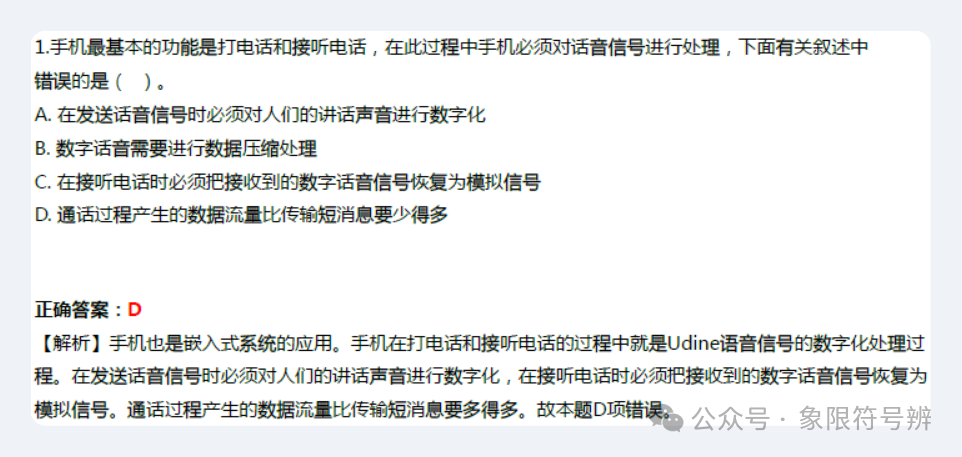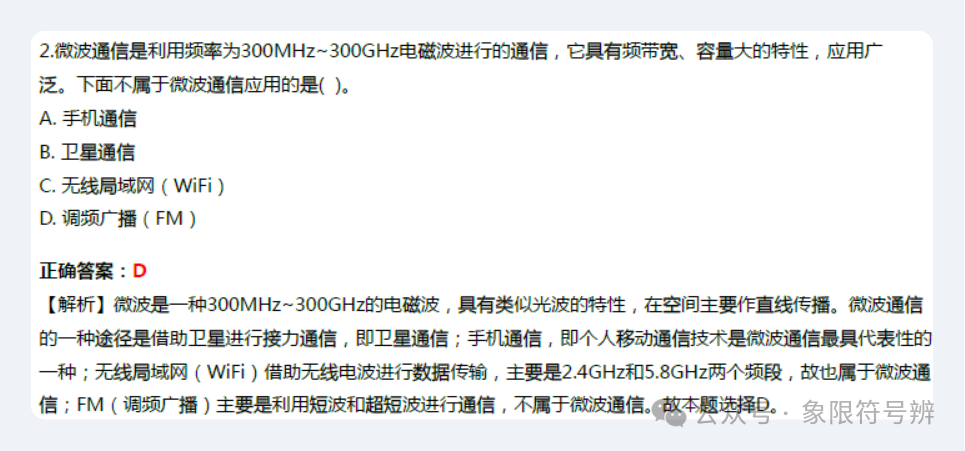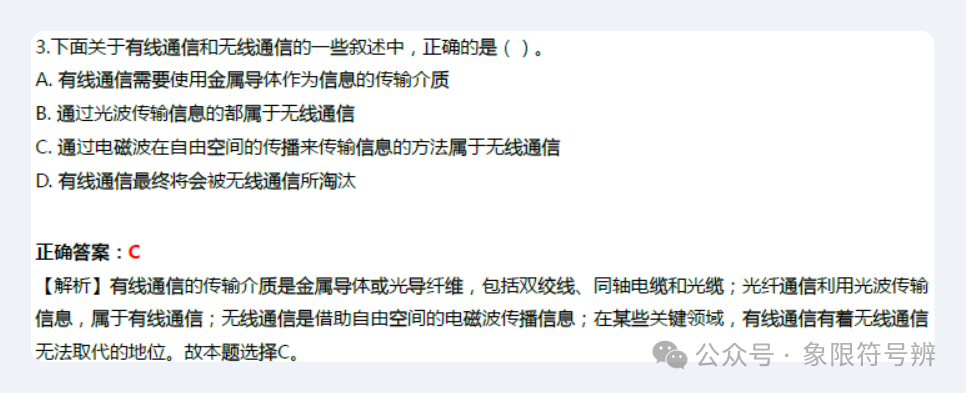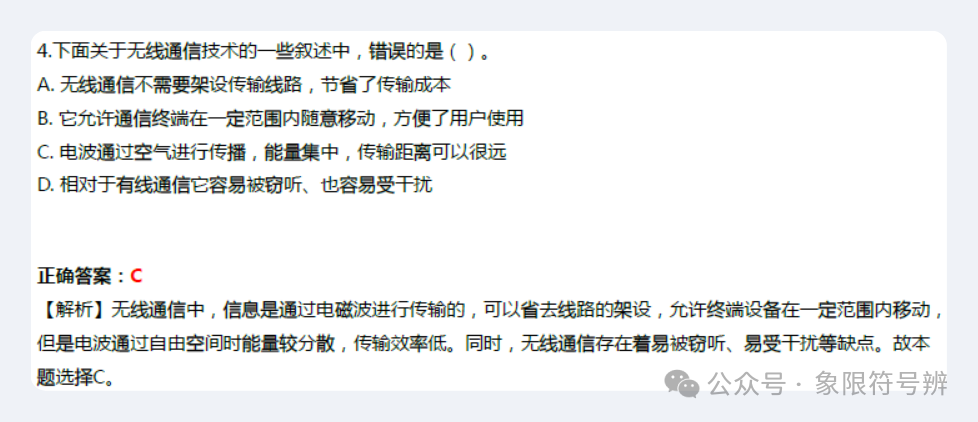Key Knowledge Points in Chapter One:
Understand the characteristics, classifications, development, and applications of embedded systems, and be familiar with the logical composition of embedded systems.
Understand the main types of embedded processing chips, be familiar with the SoC development process, and understand the significant importance of IP cores.
Be familiar with the encoding of Chinese and Western characters, as well as the types and processing of digital texts, and master the parameters, file formats, and primary applications of digital images.
Understand the classification and composition of computer networks, be familiar with the main content of the IP protocol, and master the composition of the internet and common access technologies.
1. Analog Communication and Digital Communication
The basic task of communication is to transmit information, which must consist of at least three elements: the sender of the information (called the source), the receiver of the information (called the destination), the electrical (or optical) signal carrying the information, and the transmission channel (called the channel).
The information transmitted in a communication system must be in the form of electrical (or optical) signals to be transmitted through the transmission medium. Electrical (or optical) signals can take two forms: analog signals and digital signals:
-
• Analog Signals: Represent information through continuously varying physical quantities (such as the amplitude of voltage or the intensity of current), for example, the electrical signals obtained from a microphone when people speak on the phone or a broadcaster is on air are analog signals; -
• Digital Signals: Their voltage levels or current magnitudes have only a limited number of states (generally two states), and they may be discontinuous over time. For example, the signals emitted by telegraph machines, fax machines, and computers are all digital signals.
Note:
Since analog signals are easily interfered with by noise signals during transmission, their transmission quality is unstable. Currently, the most commonly used communication method is digital communication technology, which converts analog signals into digital signals for transmission (or the source itself emits digital signals). Examples of digital communication include mobile communication, digital cable television (or satellite television), and fixed telephone relay communication (and long-distance communication).
2. Wired and Wireless Communication
According to the type of transmission medium used, communication systems can be divided into wired communication and wireless communication.
-
• The transmission medium used in wired communication is metal conductors or optical fibers, where metal conductors transmit information using electric current, while optical fibers transmit information through light waves. -
• Wireless communication does not require physical connections, but transmits information through the propagation of electromagnetic waves in free space.
The types, characteristics, and applications of communication transmission media are shown in the following table:
| Medium Type | Characteristics | Applications | |
|
|
|
|
|
|
|
|
|
|
|
|
|
|
|
|
|
|
|
|
-
• Wired Communication: -
• The use of metal cables (twisted pairs and coaxial cables) for communication has a long history, and the technology is quite mature; -
• Currently, optical fibers have far surpassed metal cables in performance; optical fibers, short for optical guiding fibers, consist of a core and cladding, with an outer coating layer providing physical protection and shielding from external light sources interference; -
• Advantages of optical fiber transmission: large communication capacity, long transmission distance, strong radiation resistance, strong confidentiality, and lightweight for easy transport and construction; -
• Wireless Communication: -
• Advantages: Allows terminal devices to move freely within a certain range; -
• Disadvantages: Low transmission efficiency, easily eavesdropped and interfered with; -
• Classified by frequency: medium wave, short wave, ultra-short wave, and microwave bands; -
• Applicable range: medium wave primarily propagates along the ground, has strong diffraction capability, suitable for broadcasting and maritime communication. Short wave has strong ionospheric reflection capability, suitable for global communication. Ultra-short wave and microwave have poor diffraction capability and can only be used for line-of-sight or beyond line-of-sight relay communication;
Examples of microwave applications:
Microwaves are electromagnetic waves in the range of 300 MHz to 300 GHz, exhibiting characteristics similar to light waves, primarily propagating in a straight line in space. When using microwaves for long-distance communication, ground microwave stations are required for relay communication, with the relay distance generally around 50 km. Another method of microwave communication is through artificial satellites, where the relay stations are installed on communication satellites, a method also known as satellite communication. Mobile phones are the most representative application of microwaves.
Development process of mobile phone microwaves:
-
• The first generation of personal mobile communication used analog transmission technology; -
• The second generation expanded the frequency band to 900 MHz to 1800 MHz. The GSM and CDMA systems widely used in China for many years are second-generation mobile communication systems, commonly referred to as 2G; -
• The third generation of personal mobile communication (3G). 3G has a higher spectral efficiency than 2G, with the frequency bands also increasing significantly (1885-2025 MHz, 2110-2200 MHz), thus greatly improving data transmission capacity compared to 2G; -
• The fourth generation of mobile communication (4G), with transmission rates up to 100Mb/s. China Mobile uses the TD-LTE standard, and its 4G phones will be compatible with 3G (TD-SCDMA) and 2G (GSM) modes; China Telecom and Unicom use the FDD-LTE standard, and their terminal devices (phones, internet cards, etc.) also adopt multi-mode operation, maintaining compatibility with the previously used 3G and 2G modes;
Sample Exam Questions




3. Transmission Technologies for Digital Communication
1. Modulation and Demodulation Technology
In information transmission, the source signal is used to adjust (change) a parameter (amplitude, frequency, or phase) of the carrier wave; this process is called modulation;
After modulation, the carrier wave carries the transmitted signal for long-distance transmission in the channel; upon reaching the destination, the receiver detects the signal carried by the carrier wave and restores it to its original form; this process is called demodulation.
2. Multiplexing Technology
To improve the utilization of transmission lines and reduce communication costs, multiple signals are generally allowed to share a single transmission line for transmission; this can be divided into the following two types:
-
• Time Division Multiplexing (TDM): In this technology, each communication terminal (such as a telephone) uses the same transmission line in a predetermined order to transmit signals (or data). -
• Frequency Division Multiplexing (FDM): Each source’s signal is modulated onto different frequency carriers, and a multiplexer combines them into a single signal for transmission over the same line. Wavelength Division Multiplexing (WDM) is a type of frequency division multiplexing technology.
3. Switching Technology
Telephone exchanges use circuit switching technology. That is, before a call, the lines of both parties are connected through dialing (establishing a physical path), and after the call, the lines are released (disconnected).
The characteristics of circuit switching are: during the entire call, the user always occupies the end-to-end transmission channel.
The characteristics of packet switching are: circuit switching has a low utilization efficiency, and the solution is to use packet switching (also known as packet switching). Its advantages include significantly improving the utilization of transmission lines; however, it also has drawbacks, such as additional overhead.
Alright, that’s it for this content.
Thank you for reading, and welcome to like, follow, and share.
See you next time!
